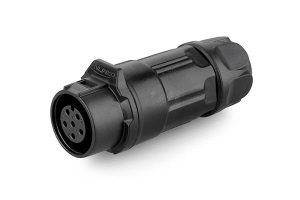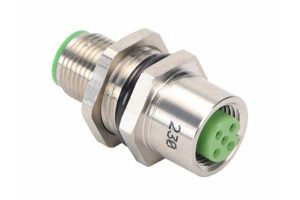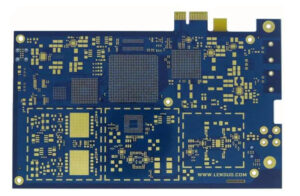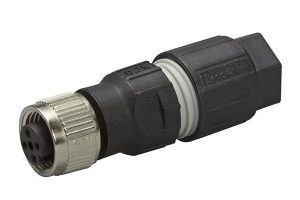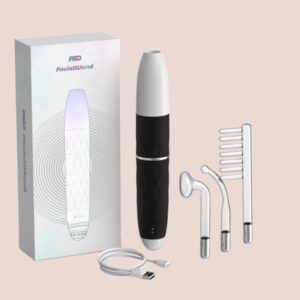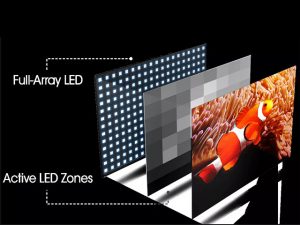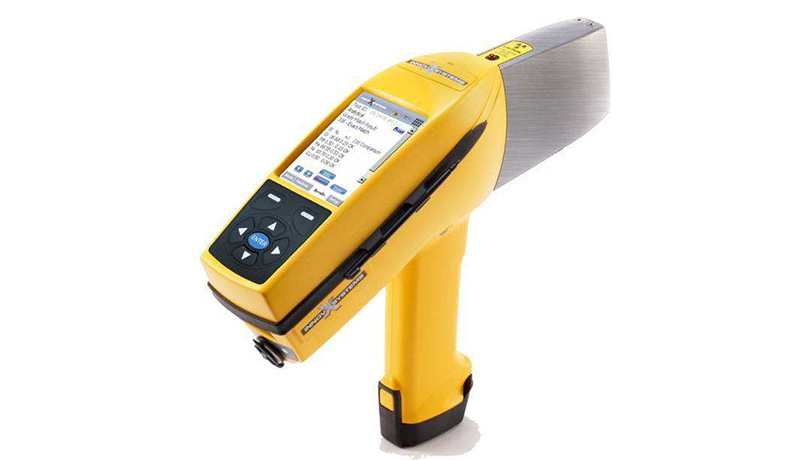
How Alloy Analyzers Work
An Alloy Analyzer is based on XRF spectroscopic technique employed to identify and quantity specific elements in a substance. Additionally, it can evaluate particular elements according to the emission wavelength and energy of X-rays and determine the amount of this element by measuring the density of the corresponding rays. Hence, the elemental composition of substances can be measured through XRF.
What are the factors that affect the error of a handheld alloy analyzer?
The factors that generally cause an error in a handheld alloy analyzer are:
- The detector is the main component of the device, which functions to determine the spectral coverage, sensitivity, resolution, and signal-to-noise ratio of the alloy analyzer spectrometer. The determination of the spectral range primarily depends on the detector’s material. Silicon-based detectors are used for the wavelength range of 190–1100nm, whereas InGaAs and PbS detectors cover 900–2900nm.
- Diffraction grating disperses the light incident from the slit in space, making its light intensity a function of wavelength. It forms the base for spectroscopic detection. Additional control over the spectral coverage, resolution, and stay light levels can be achieved by using different diffraction gratings for the optical bench and array detector.
- The incident slit primarily influences the resolution and luminous flux of the instrument. The detector detects the image displayed by the slit on the detector. Hence, the resolution of the alloy analyzer spectrometer is greatly affected by the size of the slit. A small slit equates to higher resolution and vice versa. Additionally, the size of slit will also affect the luminous flux of the allow analyzer. If the slit is large in size, the luminous flux will be great but if the slit is small the luminous flux will also be small. Hence, the slit and luminous flux share a direct relationship with each other.
- The accuracy of the test results is heavily dependent on the test time. Longer test time ensures higher accuracy. If a particular detection time is not achieved when analyzing, the results might be inaccurate. The alloy analyzer time is 10–60 seconds.
- Small sample size is generally preferred. A large sample size can result in different element content and composition results.
- The findings of different compounds’ measurements are different. Even seemingly insignificant products might have a lot of components.
- It’s crucial for the sample to be homogeneous. If the sample surface is uneven, deviation in the test results is observed. Ensure the surface is flat and firm and avoid wobbliness.
- The thickness of the sample can affect the results of a handheld alloy spectrometer. Sample thickness limits are pre-defined in the case of a handheld fluorescence spectrometer. Certain samples may be coated with a layer of metal, plastic, copper, or other coatings. It will also have an effect on sample detection during the detection process.
- High temperatures can interfere with the test results and reduce the accuracy of the instruments. Handheld spectrometers have high-temperature resistance but only to a certain degree. Attention to detail is crucial while using such instruments.
Factors Affecting the Price of a Handheld Alloy Spectrometer”
Presence or absence of certain materials, difference in raw material and other technology based things may affect the rice of an instrument significantly. The price of a handheld alloy spectrometer is dependent on three things:
- Prices of the instrument vary as the manufacturer changes. Each brand has a different manufacturer that offers a different price.
- Upgradation and technology enhancements in the device can greatly influence the price of a handheld spectrometer.
- After-sales service is an important factor when comparing prices. Each manufacturer provides a different warranty period. Similarly certain brands have high after-sale installation costs. Therefore, all these factors must be kept in mind.
The handheld alloy analyzer is capable of identifying ROHS harmful metal elements. In fact, commonly used handheld spectrometers can test approximately 90% of metal elements and detect trace light elements such as magnesium, sulfur, etc. A market survey is important before buying a handheld alloy spectrometer to evaluate and compare the pricing next to the features and benefits offered. The spectral alloy analyzer is suitable for its own metal element testing industry.
How to choose a handheld alloy spectrometer?
Handheld alloy spectrometers are widely utilized in a variety of industries, including PMI material quality inspection and recycling. Because of its uniqueness, most companies require the purchase of a handheld alloy spectrometer, so how do you select an appropriate handheld alloy spectrometer?
- Stability:
Stability is an essential parameter of a handheld spectrometer. Use of ICP as a standard sample before analysis results in variation between measured data and results. The reason might be a quality problem in the spectrometer.
- Analysis speed:
There are two types of handheld spectrometers:
- Full-spectrum type.
- Scanning type.
As of now, the majority of them are full-spectrum type. The scanning type is relatively slower and is employed in special industries.
3. Wavelength range:
Examine the wavelength range to see if it covers the element to be identified. If it can cover, it signifies the spectrometer is in good working order.
4. Spectrometer surface:
The surface of an ideal handheld alloy spectrometer has a smooth and clear surface. Hence, the surface can be felt by physical touch to evaluate smoothness and eliminate the probability of roughness making quality checks easier than ever. Check the spectral alloy spectrometer head, spectral body, and spectral tongue on the handheld spectrometer. Closely observe different parts such as the handle and cladding plate are present or not. Check the condition of the surface of all electroplated and painted parts to check if there’s rusting or not.
5. Evaluate the weight:
A lightweight handheld alloy spectrometer indicates cheap quality. Observe and check the detector of the alloy spectrometer and feel the weight, if its light it means low-quality material was used for production. Handheld spectrometers made of pure copper or other high-quality materials will feel heavier, but those made of copper-plated alloy are relatively light. Plastic is even lighter. The main components of the better handheld spectrum alloy spectrometer body are usually made of 304 stainless steel, which has high temperature and corrosion resistance, as well as the ability to prevent certain types of violent damage.
6. X-ray tube
X-ray tube quality is a key factor in determining the service life of the handheld alloy spectrometer. Low-quality tube means the handle will easily sag, and the life of the instrument will reduce significantly. In the handheld alloy spectrometer, test the hardness of the X-ray tube. An excellent X-ray tube is soft to the touch and moderately firm.
7. Alloy spectrometer detector
The detector is the foundation of the handheld alloy spectrometer and is crucial to its operation. It’s possible to damage the instrument if the detector on a handheld spectral alloy spectrometer is fractured.
FAQ:
What alloying elements can be analyzed by a handheld alloy analyzer?
Different handheld alloy analyzers can analyze different elements, such as:
If the handheld alloy analyzer adopts single light speed, alloy software mode, and SI-PIN detector, the target sample can be equipped with Rh/Ta, a 4W current, and an x-ray tube. It analyzes Titanium, vanadium, chromium, manganese, iron, cobalt, nickel, copper, zinc, tungsten, zirconium, tantalum, rhenium, lead, bismuth, zirconium, niobium, molybdenum, silver, tin, antimony, palladium, cadmium.
If the handheld alloy analyzer adopts the three-light speed, alloy software mode, and SDD detector, the detection limit is 25MM2, and the target sample is AG or AU, 4W current, and x-ray tube. It analyzes aluminum, silicon, phosphorus, sulfur, magnesium, Titanium, vanadium, chromium, iron, cobalt, nickel, copper, zinc, tungsten, zirconium, tantalum, rhenium, lead, Bi bismuth, zirconium, niobium, molybdenum, silver, tin, antimony, palladium, cadmium.
Furthermore, certain manufacturers of handheld alloy analyzers support 256 regularly used alloys that can be detected, as well as 300 user-defined alloys.
How to Determine the Calibration Period for a Handheld Alloy Analyzer?
- Statistical method: The measurement of handheld spectrometer alloy analyzer is preliminarily grouped based on the similarity of structure, expected reliability, and measurement stability. Each handheld spectrometer group is determined per the basic traditional knowledge.
- Hour time method: The timing indicator can be attached to the measurement handheld spectrometer alloy analyzer. When the indicator reaches the specified value, the handheld spectrometer alloy analyzer is sent back for calibration.
- Comparison method: Each measurement handheld spectrometer alloy analyzer undergoes calibration per the specified calibration cycle. The calibration data is compared with the previous calibration data and if the results of continuous cycles lie within the standard allowable range. The calibration period can be prolonged. Reduce the calibration period if the results do not lie within the allowable range.
- Chart method: Measure the handheld spectrometer alloy analyzer in each calibration round. Make sure to select the sample representative calibration point. Trace the results timely, generate a curve and calculate the handheld spectrometer alloy with the help of the curves. From the data in the graph, the optimal calibration cycle can be found.
